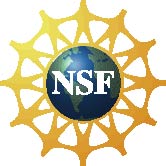What is Our Work?
The extreme complexity and enormous length of DNA molecules have historically made study a daunting task, far more than any one scientist could tackle alone. However, thanks to software power and interdisciplinary collaboration we are increasingly able to ascertain greater understandings, novel views on microbes and their collective microbiomes, and more!
The emerging field of “Genomics” (analysis of DNA sequences) requires that thinkers of all kinds – humanists, scientists, and biologists, come together.
During it’s run, the Genomics Group focused their teaching model on the design and implementation of original software by an interdisciplinary team of students. A “linked” teaching model was introduced as part of the educational component of the Genomics Research Group, whereby pre-existing courses in computer science were flexibly paired with biology courses to facilitate real-life professional collaborations in the field, an decision which ultimately led to the development of the Bioinformatics major.
Our Research
Their research and work in the lab continues to pour into teaching and influences undergraduate curricula in biology and computer science. This in turn continually contributes to a pipeline of students who work with these professors on their research, even with the group now on hiatus.
Student-Professor work has included, for example, a study in applying authorship attribution techniques in search of genomic signatures to detect putative horizontal transfer events and the construction of a Motif Lexicon (or DNA dictionary).
In addition, Professors LeBlanc and Dyer have team-taught multiple iterations of a course called “DNA” where students learn to write small scripts to morph and mash DNA data, including the creative use of regular expressions in Python to explore DNA sequences.
As it stands…
While the Genomics Research Group no longer exists, it has evolved into several related projects, one of which is the Lexomics Research Group under the leadership of Professor Michael Drout and Professor Mark LeBlanc. LeBlanc recently taught a first-year seminar called “DNA”, sharing the love of microbes, personalized medicine, and the probing of microbial genomes. LeBlanc continues to share the model of bringing computing and the life sciences together, including:
Boese, E.S., LeBlanc, M.D., and Quinn, B.A. (2017). EngageCSEdu: Making interdisciplinary connections to engage students. ACM Inroads, v8(2), 33-36. https://inroads.acm.org/article.cfm?aid=3078321
LeBlanc, M.D. (2016). Computing and the Digital Humanities. An NCWIT Teaching Paper: National Center for Women & Information Technology. Published sets of course materials for the “DNA” and “Computing for Poets” course (8+ programming assignments available). http://www.engage-csedu.org/sites/default/files/LeBlanc_EngageCSEdu-TeachingPaper.pdf
LeBlanc, M.D. and Drout, M.D.C. (2015). “DNA and 普通話 (Mandarin): Bringing introductory programming to the Life Sciences and Digital Humanities. Procedia Computer Science: International Conference on Computational Science, 51, 1937-1946. http://www.sciencedirect.com/science/article/pii/S1877050915012661
Partial support for this work was provided by the National Science Foundation’s Course, Curriculum and Laboratory Improvement program (CCLI-EMD) under grant NSF DUE 0340761

